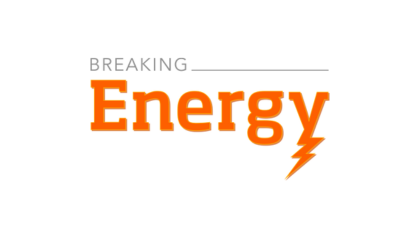 International Energy Agency IEA Chief Economist Fatih Birol (C) talks as Brazil’s state-controlled energy giant Petrobras CEO Jose Sergio Gabrielli de Azevedo (R) and and Italian energy giant Enel CEO Fulvio Conti (L) listen at the end of a press briefing at the IEA ministerial meeting at the OECD headquarters in Paris on October 18, 2011.
International Energy Agency IEA Chief Economist Fatih Birol (C) talks as Brazil’s state-controlled energy giant Petrobras CEO Jose Sergio Gabrielli de Azevedo (R) and and Italian energy giant Enel CEO Fulvio Conti (L) listen at the end of a press briefing at the IEA ministerial meeting at the OECD headquarters in Paris on October 18, 2011.
Oil and gas industry advocacy groups differed in their reaction to a new unconventional gas development report, highlighting the importance of a major US election issue and the messaging that surrounds it.
The International Energy Agency – the OECD’s energy watchdog and OPEC counterweight – this week released a major component of its well-known World Energy Outlook entitled “Golden Rules for a Golden Age of Gas.” The 150-page report is an extension of IEA’s 2011 WEO special report that asked, “Are We Entering a Golden Age of Gas?”
In an approach favored by the agency, this new report takes a scenario based approach and presents two potential global natural gas development cases: the Golden Rules Case and the Low Unconventional Case. The former assumes that controversial issues associated with unconventional gas development – particularly shale gas – like hydraulic fracturing/horizontal drilling, water pollution risks, water usage and greenhouse gas emissions are successfully mitigated to the point where the oil and gas industry achieves a “social license to operate.”
Fracking and horizontal drilling are major technical factors in the recent dramatic US shale gas output increase that flipped market fundamentals from an import-dependent outlook to an export scenario and crashed US natural gas prices in a matter of years.
Conversely, the latter IEA case assumes that public discontent over controversial natural gas development reaches a point where opponents ultimately win out over industry and “only a small share of the unconventional gas resource base is accessible for development,” the report said.
These scenarios encompass the global gas market, though the report provides country-level and regional analysis of the US, Canada, Mexico, China, Europe and Australia.
And In This Corner…
Two major US industry groups – America’s Natural Gas Alliance and the American Petroleum Institute – have taken different tones in responding to the IEA report, with API responding positively and ANGA reacting a bit more coldly. ANGA and API both count several of the same companies as members.
“We are pleased to see that the IEA report acknowledges that the US oil and natural gas industry has already implemented tough environmental standards, operates under stringent state regulations, and is transparent about its operations,” the API said in its statement.
On the other hand, ANGA’s statement expressed the opinion that the IEA missed the mark. “In calling for the industry to ‘address’ environmental issues, the IEA has ignored concrete steps that have been taken and effective practices already in place to produce this vital resource while protecting our other natural resources,” the group said.
Two of the three practices mentioned in ANGA’s statement were discussed in the US section of the IEA report. While ANGA was not specifically mentioned in the chapter – where API was – an ANGA-sponsored study was cited as a reference.
Watch Your Language
The development of enormous US shale gas deposits has become a highly divisive issue, with particular focus directed toward fracking and associated concerns. Energy is already a major US election issue and fracking is likely to be at the forefront of much of the debate, with numerous government, environment and industry stakeholders all loudly weighing in.
As the sometimes heated discussion intensifies, the messaging on behalf of critics and proponents designed to influence public opinion will be crucial to determining an outcome that could likely fall somewhere between the IEA’s best and worst case scenarios for the future of natural gas both in the US and globally.
The shift toward a stakeholder based approach to natural gas development could benefit the IEA by giving its policy recommendations greater heft in permitting and regulatory oversight. The IEA pointed out in its press release announcing the report that “at their recent Camp David summit, G8 leaders welcomed and agreed to review this IEA work on potential best practices for natural gas development.”
